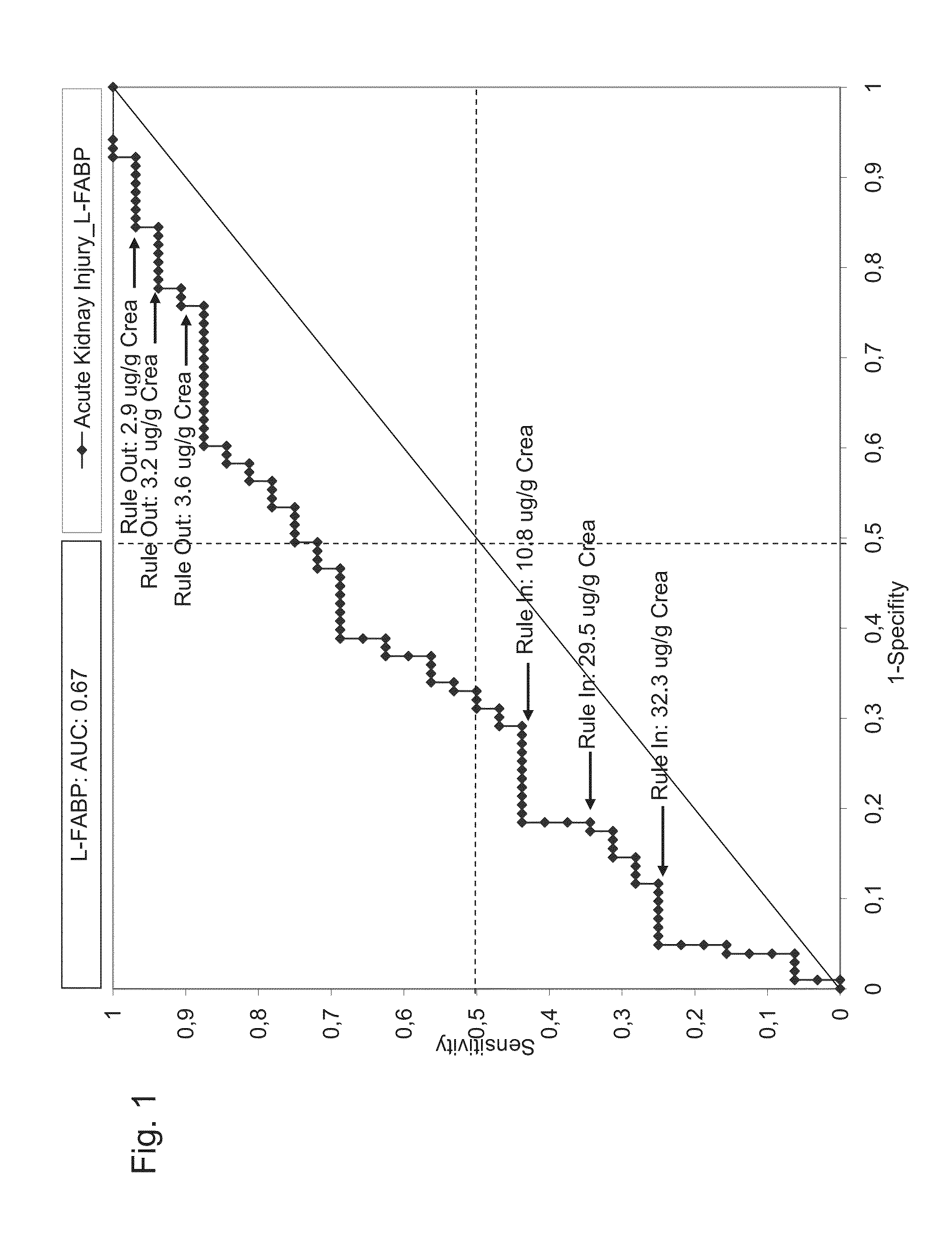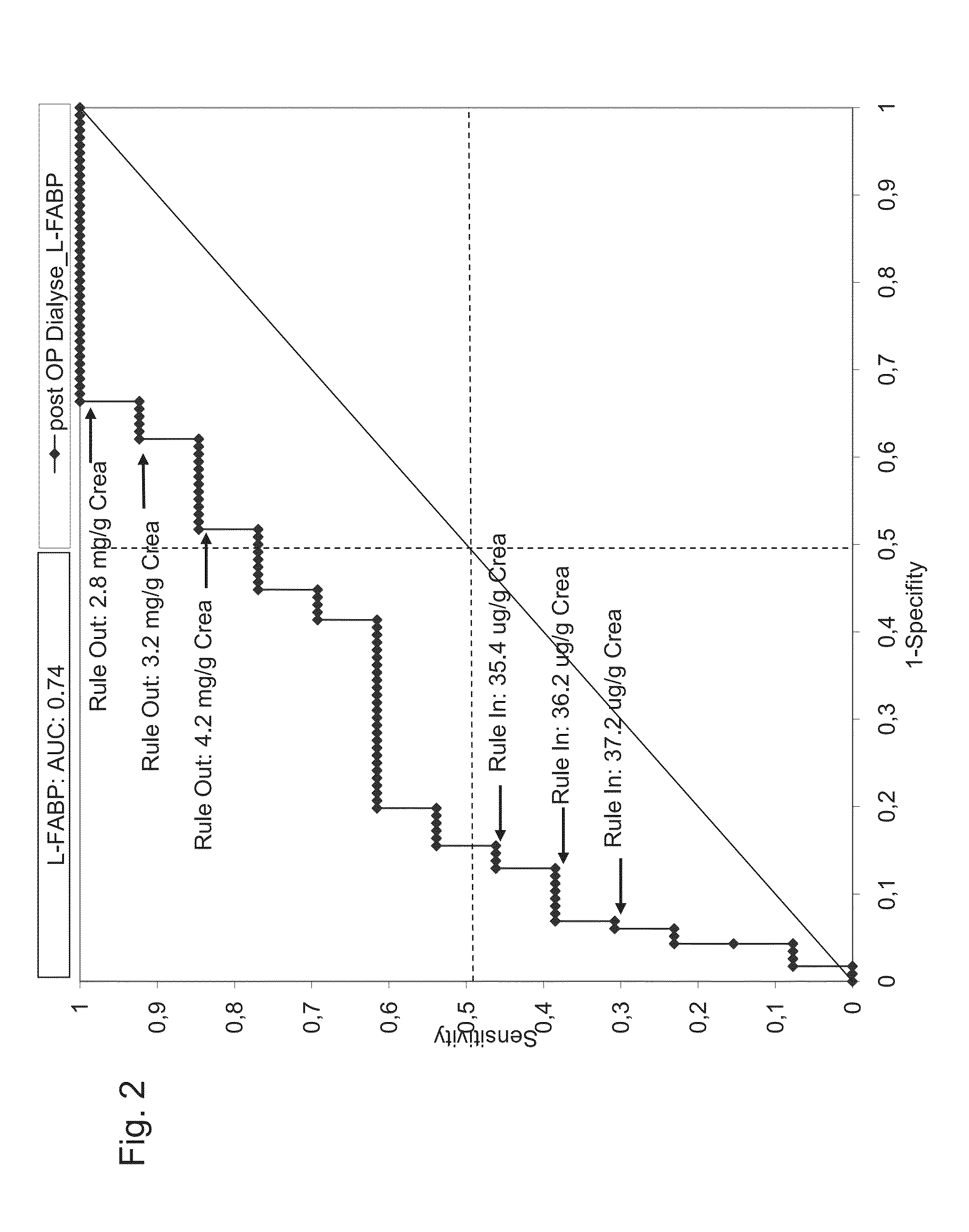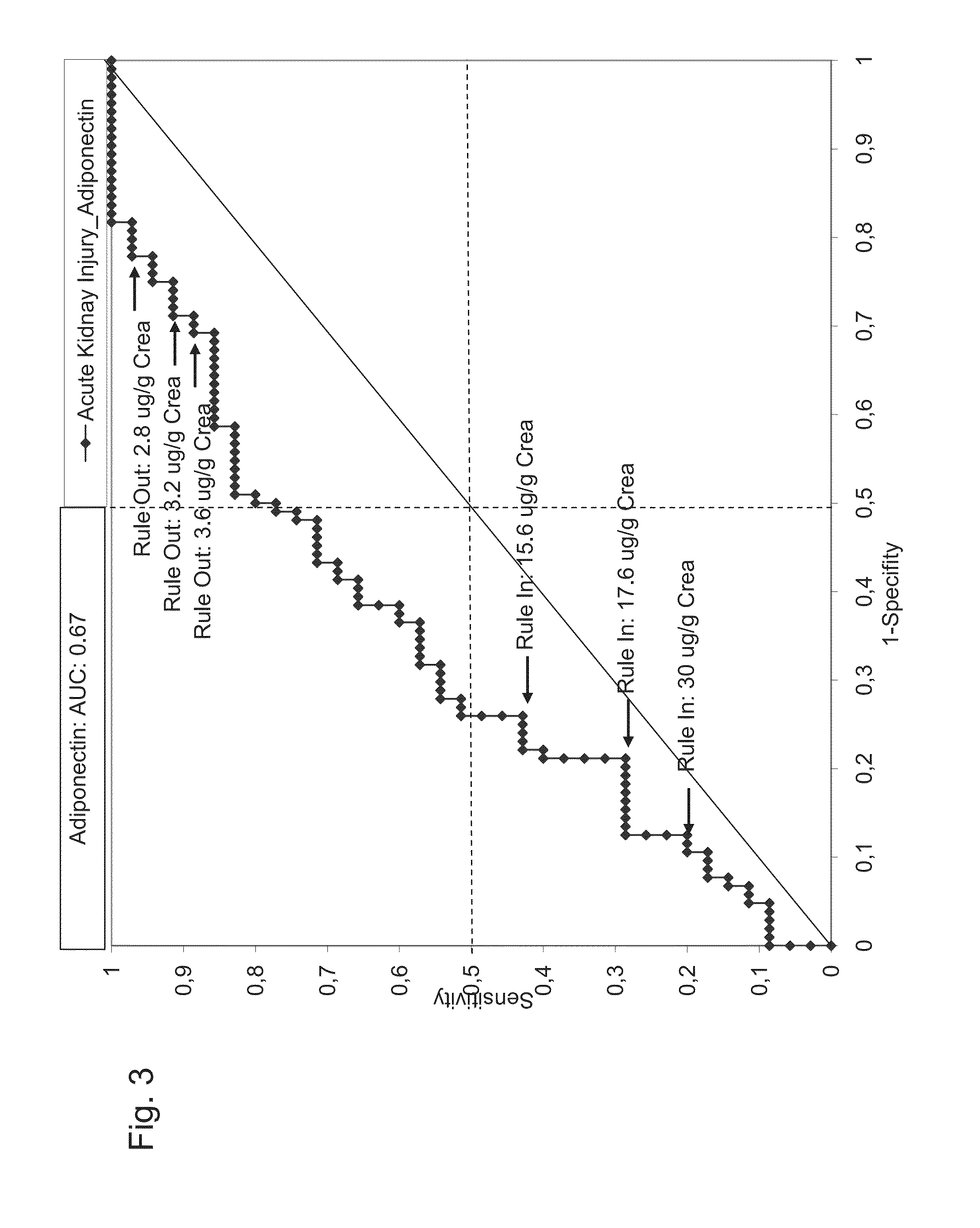Prediction and recognition of acute kidney injury after surgery
a kidney injury and acute kidney technology, applied in the field of acute kidney injury prediction and recognition after surgery, can solve the problems of acute kidney injury, significant risk of aki, and the deterioration of renal function to chronic renal failure, so as to increase the risk and increase the risk
- Summary
- Abstract
- Description
- Claims
- Application Information
AI Technical Summary
Benefits of technology
Problems solved by technology
Method used
Image
Examples
example 1
[0261]A total of 126 patients (median age 63 years), creatinine within normal range, undergoing elective coronary bypass surgery were evaluated for the presence of kidney injury markers before, after and 6, 12 and 24 hours after intervention.
[0262]89 patients did not develop AKI, AKI was recognized in 37 patients as indicated by an increase in creatinine by at least 0.3 mg / dl, 12 patients developed need for dialysis and 9 died within 30 days after surgery.
[0263]The following urinary kidney markers were measured: Albumin, adiponectin, L-FABP and NGAL. The results are presented in the ROC curves 1-18 (see above).
[0264]The amount of L-FABP in a sample taken before surgery predicts the need for dialysis after surgery well (see FIG. 2). A sensitivity of approximately 60% can be reached while maintaining a selectivity of about 80%. Thus, the need for dialysis after surgery is correctly predicted for more than half of all patients who finally require dialysis.
[0265]It is important to under...
example 2
[0266]A patient is scheduled to undergo cardiovascular bypass grafting. The patient's amount of urinary L-FABP before surgery is 36.0 μg / g Creatinine. Consequently, the fluid balance of the patient is carefully monitored and low perfusion temperatures of the cardiopulmonary bypass are avoided. The patient recovers from surgery without signs or symptoms of kidney injury.
example 3
[0267]A patient is scheduled to undergo cardiovascular bypass grafting. The patient's amount of urinary L-FABP before surgery is 3.1 μg / g Creatinine. Although no special preventive measures are taken, the patient recovers from surgery without signs or symptoms of kidney injury.
PUM
| Property | Measurement | Unit |
|---|---|---|
| concentrations | aaaaa | aaaaa |
| concentration | aaaaa | aaaaa |
| molecular mass | aaaaa | aaaaa |
Abstract
Description
Claims
Application Information
 Login to View More
Login to View More - R&D
- Intellectual Property
- Life Sciences
- Materials
- Tech Scout
- Unparalleled Data Quality
- Higher Quality Content
- 60% Fewer Hallucinations
Browse by: Latest US Patents, China's latest patents, Technical Efficacy Thesaurus, Application Domain, Technology Topic, Popular Technical Reports.
© 2025 PatSnap. All rights reserved.Legal|Privacy policy|Modern Slavery Act Transparency Statement|Sitemap|About US| Contact US: help@patsnap.com



